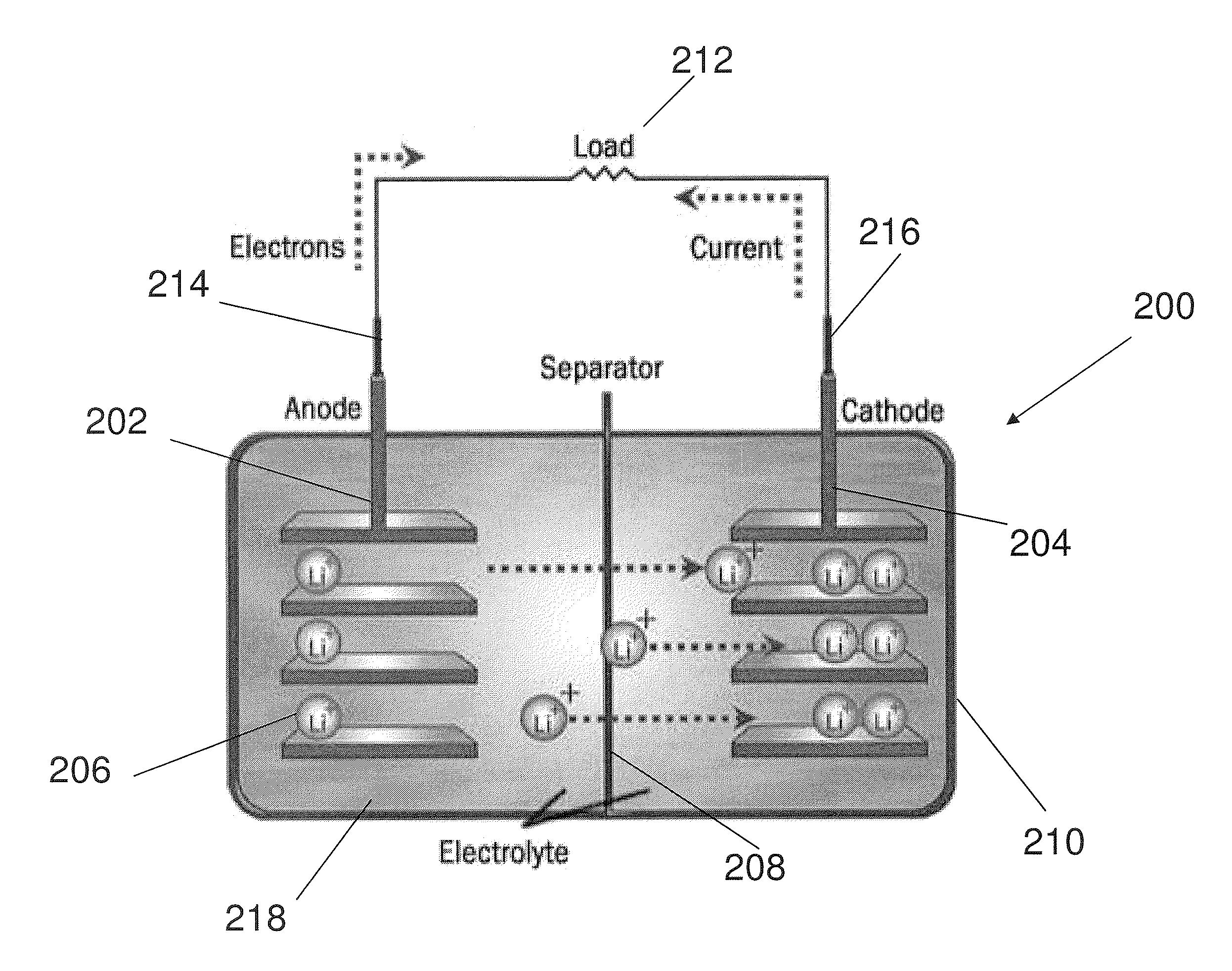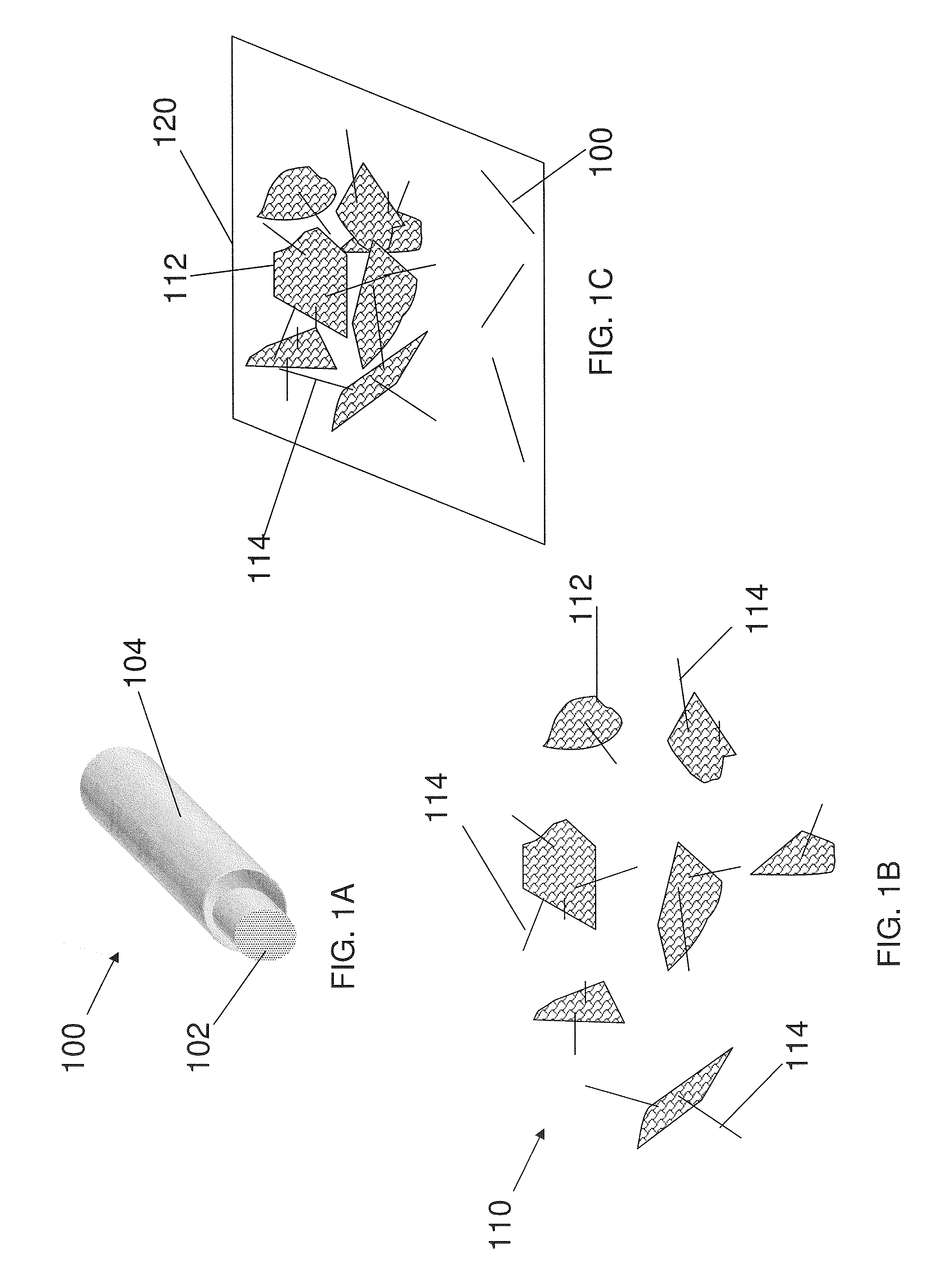Nanostructured Materials for Battery Applications
a technology of nanostructured materials and battery applications, applied in the direction of cell components, cell component details, electrochemical generators, etc., can solve the problems of material disintegration and severely limit any potential battery li
- Summary
- Abstract
- Description
- Claims
- Application Information
AI Technical Summary
Benefits of technology
Problems solved by technology
Method used
Image
Examples
example 1
Preparation and Characterization of Si Nanowires
Growth and Shape of Si Nanowires
[0147]Vapor-liquid-solid (VLS) methods are utilized for growing Si nanowires. The wires are single crystalline with diameters between about 20 nm and about 200 nm and lengths between about 1 μm and about 50 μm. The growth processes allow for high degrees of freedom in the design of shape, size, composition etc. For example, nanowires are able to be manufactured that are substantially straight and with a yield of greater than about 99% (see FIG. 5A). For battery applications, an interwoven, interleaving or overlapping structure is suitably used (see FIG. 5B). The nanowires can also easily be doped, as well as grown as alloys or multi phase materials. Suitably, Si nanowires of approximately 20 nm-60 nm diameter in a core / shell configuration where the shell consists of a thin layer of carbon that is mostly covalently bonded to the silicon are produced. This carbon layer provides the path for electronic cond...
example 2
Preparation and Characterization of Anodes Using Nanowire-Carbon-Based Substrate Additives
Increased Anode Capacity and Cycle Life
[0168]To approximate commercial battery formulations and for purposes of a baseline and control, a mixture of 80% graphite with 10% carbon and 10% PVDF (Li-G-C-PVDF) was utilized as a battery slurry. To determine the capacity of the nanowire materials of the present invention, 10% of the graphite was replaced with 10% Si Nanowire material (Li—SiNW-G-C-PVDF). FIG. 13 shows a resulting increase in capacity when using the nanowires. The capacity gain is initially 30% and continues to increase to 50% after about 60 charge / discharge cycles. The increase in capacity with number of cycles can be explained by examining an SEM micrograph of the structure of the Si NWs after a few cycles (FIG. 14). The formerly smooth nanowire surfaces become microstructured, increasing the surface area, thus increasing the interfacial area between silicon and ion conductor and shor...
PUM
| Property | Measurement | Unit |
|---|---|---|
| Length | aaaaa | aaaaa |
| Length | aaaaa | aaaaa |
| Diameter | aaaaa | aaaaa |
Abstract
Description
Claims
Application Information
 Login to View More
Login to View More - R&D
- Intellectual Property
- Life Sciences
- Materials
- Tech Scout
- Unparalleled Data Quality
- Higher Quality Content
- 60% Fewer Hallucinations
Browse by: Latest US Patents, China's latest patents, Technical Efficacy Thesaurus, Application Domain, Technology Topic, Popular Technical Reports.
© 2025 PatSnap. All rights reserved.Legal|Privacy policy|Modern Slavery Act Transparency Statement|Sitemap|About US| Contact US: help@patsnap.com



